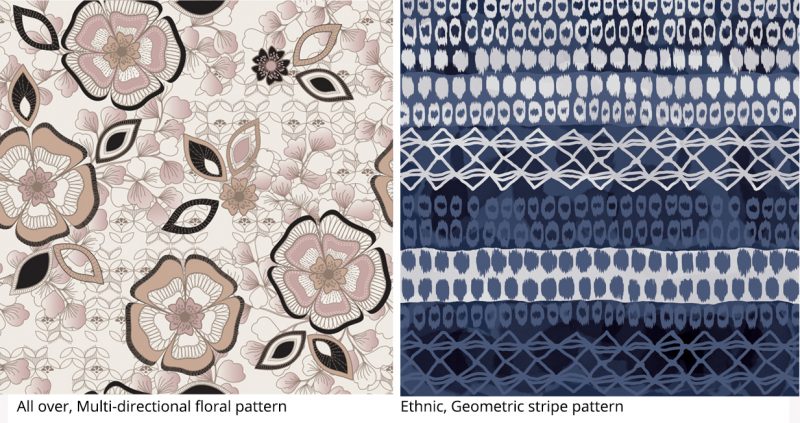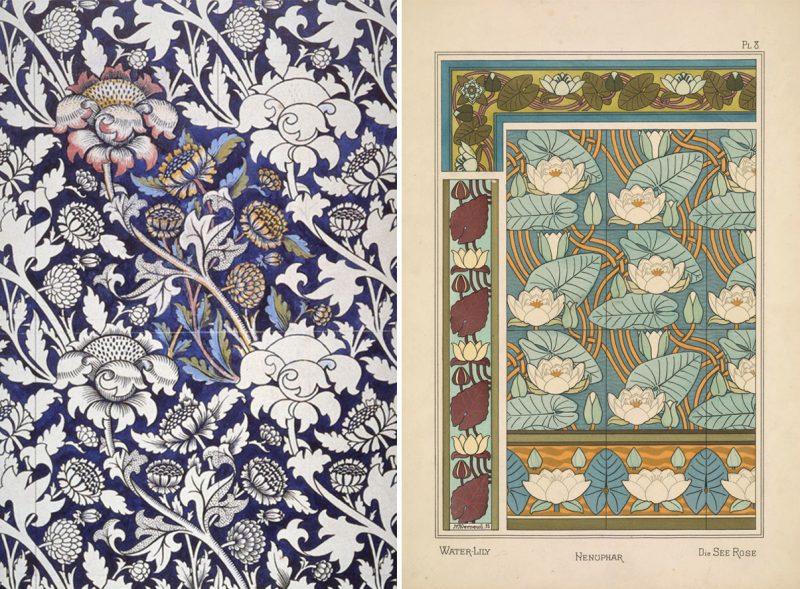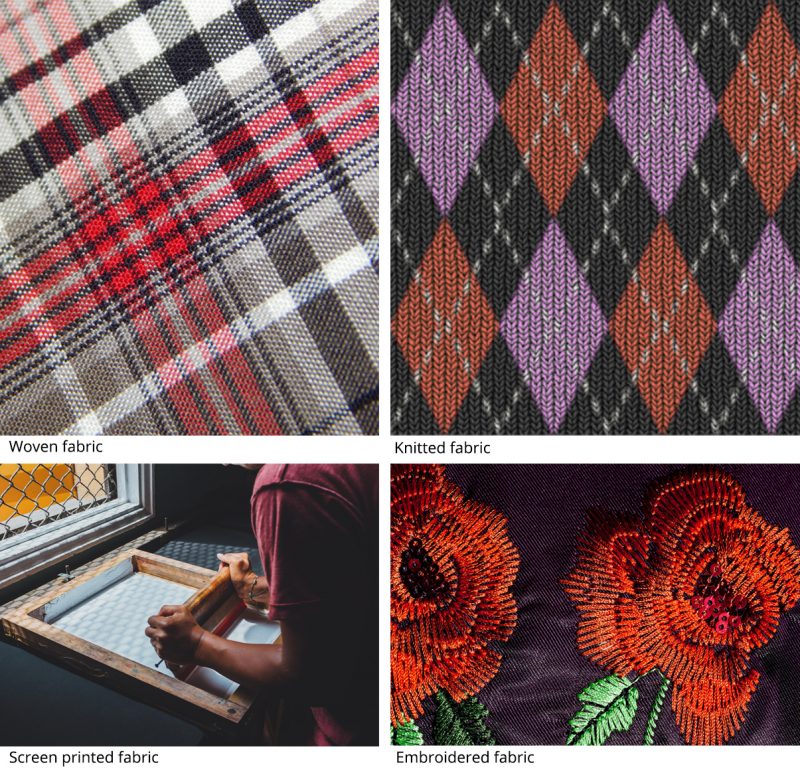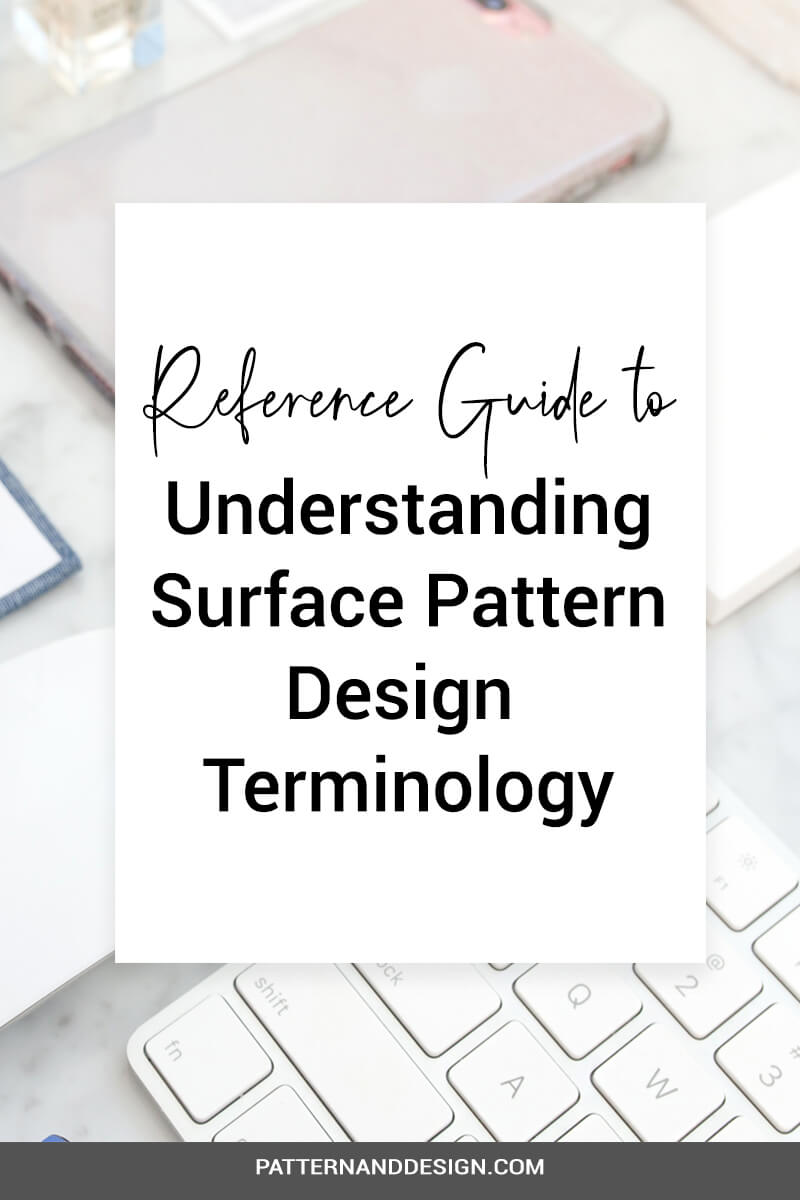learn about all things surface pattern design including the creative design process, being a successful creative entrepreneur & stepping into the mindset of a successful designer
welcome to the pattern design blog
blog
The
Categories
Popular
Surface Pattern Design Reference Guide
Do you sometimes feel confused by all the different design terms and don’t quite know how they might be relevant to you? It can be overwhelming when you’re first starting out, so I have collated some common textile and design terms together to create a surface pattern design reference guide.
SURFACE PATTERN DESIGN REFERENCE GUIDE
1. Surface Pattern Repeats:
One of the fundamental steps of creating a surface pattern repeat is understanding the different repeat systems and how to use them. To put it simply, it’s how to repeat out your motifs/elements to create your design. It can seem quite daunting, to begin with, but once you get the hang of creating pattern repeats you’ll be a pro in no time. There are quite a number of different ways you can create a surface pattern repeat, some simple, some complex. Here’s a list of some of the most common:
- Full drop
- Half drop
- Brick
- Diamond
- Ogee
- Stripe
- Tossed
For details and images on how you create each of the different surface pattern repeats mentioned, have a look at my blog post ‘How to create the 7 most common Surface Pattern Repeats’. You can also sign up to receive my FREE Surface Pattern Repeat eBook.
2. Surface Pattern Design Layouts:
The way you lay out the elements within your surface pattern design can affect the overall look and feel of the end result. Do you want it to be free flowing, structured etc.? It’s important to think about what mood you are trying to create so you can select the best possible layout for your pattern design.
There are many different layout ideas but here are just a few to consider:
All Over
All over pattern repeats are designs where the motifs are replaced within a repeat unit and then repeated seamlessly. That means that they repeat without showing a join. They can consist of just a few motifs that are sparsely placed or many motifs placed closely together. Most surface pattern designs can be described as all over repeats.
One way/ Directional
One way or directional pattern repeats use elements or motifs that indicate a strong horizontal, vertical or diagonal direction. The designs can be more limited in their use as they are intended to be used in only one direction and are most commonly used for soft furnishings such as curtains.
Two Directional
A two directional surface pattern design uses elements or motifs that have either a strong horizontal or vertical direction. Two directional designs are reversible, in other words, its top and bottom are interchangeable.
Multi-Directional
Multi-directional repeats can be viewed from any direction. By placing the elements or motifs in different directions the pattern design does not appear to have a top, bottom, left or right. Multi-directional designs are great for fabric rolls as they can be cut and used from any point, therefore avoiding fabric wastage.
Engineered/ Placement
An engineered or placement print allows you to control artwork and where it is placed on the product. T-shirts are a great example of where engineered prints are commonly used. Engineered prints give you the freedom to design for a specific end purpose as the artwork can be created at the correct scale for the required product.
3. Surface Pattern Design Motifs / Subject Matter:
The choice of subject matter will depend on what or who you are creating your surface pattern design for. Subjects for design motifs are endless but here are a few to consider:

Florals
Florals are one of the most popular subject matter to use for surface pattern design motifs. The floral category not only includes flowers but also grasses, leaves, pods, pinecones, marine plants and generally other gatherings of the garden. There are a large number of different types of florals including abstract, stylised, ditsy, geometric, traditional and contemporary.
Geometrics
Geometric designs are based on geometric shapes such as lines, squares, circles, triangles, polygons etc.
Paisley
The paisley design is based on a curved, tear shaped motif that is embellished and stylised and usually colourful in design.
Abstract
Abstract designs are those which have no identifiable form so therefore are independent of any other reference.
Stripes
Stripe designs consist of vertical, horizontal or diagonal lines. Stripes can be made up of bands of colour of various sizes or they can be more complicated. Other stripe patterns include zig zags, textures and patterns.
Conversational
A conversational print (also known as a novelty print) is made up of recognisable motifs or objects. They can be depicted as a whole scene or just a motif on its own. eg. animals, landscapes, licensed motifs (Mickey Mouse etc).
Ethnic
Ethnic pattern refers to a pattern or design that is specific to a nationality or culture.
Toile
A Toile (also known as a toile du Jouy) is a narrative design printed in one colour on a neutral background. The design is usually based on a scenic, political or romantic theme.
Grab my list of BONUS Reference Definitions
4. Historical Eras:
Historical eras are a great source of inspiration and designers will often create surface pattern designs that reference a particular historical era. Some examples include:
 William Morris, Arts and Crafts Movement Maurice Pillard Verneuil, Art Nouveau
William Morris, Arts and Crafts Movement Maurice Pillard Verneuil, Art Nouveau
Arts and Crafts
The Arts and Crafts movement saw a return to handwork and craftsmanship and was a reaction to the Industrialisation of the late 19th Century. Simple forms, natural motifs inspired by flora and fauna as well as natural materials were all characteristics of the movement. William Morris was a prolific textile designer of this era.
Art Nouveau
Art Nouveau flourished at the end of the 19th century and is based on intricate and detailed curving lines and stylised natural forms.
Art Deco
The Art Deco period was a decorative period that ranges from the 1920’s to 1930’s. It consists of geometric shapes, bold colour and sharply defined outlines.
Mid-Century Modern
The Mid-Century era is characterised by its simplicity and its avoidance of ornamental details. It instead uses clean lines, geometric shapes and organic curves.
5. Ethnic Cultures:
Ethnic designs refer to the cultural influences on a design from a particular geographical location. These include but are not limited to:
- Folk art
- Indian
- Japanese Shibori
- African
- Tribal
- Mexican
- Middle Eastern
- Indonesian
6. Textile Production Techniques / Processes:
There are many ways of producing textiles and the one you choose will depend on the required end use of the fabric. Here a few of the most common production techniques:

Weaving
Weaving is a method of interlacing two yarns at right angles to create a piece of fabric.
Embroidery
Embroidery is the art of embellishing a piece of cloth by sewing an ornamental design with a needle and thread.
Knitting
Knitting is created by using two needles to create loops of yarn which interlock together to create a piece of fabric.
Screen Printing
The art of screen printing requires using a stencil or photographically transferring artwork onto a mesh screen. A squeegee is then used to push ink through the screen onto the fabric.
Digital Printing
Digital printing uses artwork on a digital file which is printed onto a fabric roll using large format ink-jet printing machines.

Want to create another revenue stream by turning your art into surface pattern designs?
Get the free guide
Get my FREE Surface Pattern Design Starter Guide